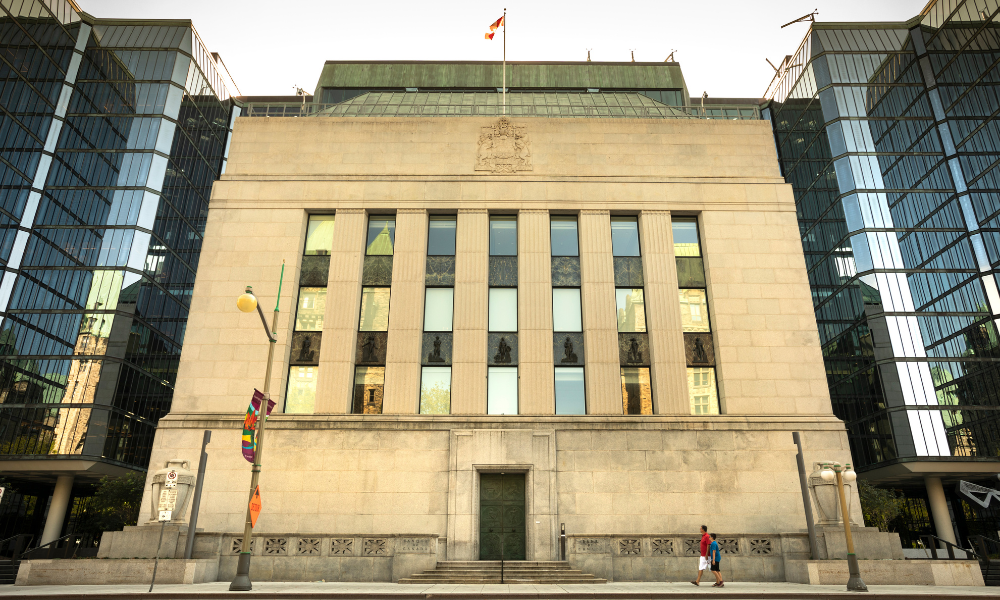As the central bank blows past its neutral rate, policy experts ask: how fast will it hike from here?

The Bank of Canada has been aggressively tightening its policy rate in an all-out effort to tame inflation – but should it keep up that pace, or ease up?
That’s the question posed by Steve Ambler and Jeremy M. Kronick in a note published by the C.D. Howe Institute.
The authors noted that by raising its overnight rate target by 75 basis points this month, the Bank of Canada has brought the target past the its "neutral rate" of between 2 and 3 percent. The majority of economists and market observers think the overnight rate needs to be higher than neutral to combat inflation.
Read more: Bank of Canada keeps foot on gas with another supersized rate hike
Even though the annual inflation rate decreased from 8.1 percent in June to 7.6 percent in July, it is still well above the 2-percent target and even the top end of the 1-to-3-percent target range.
“There is much less consensus, however, on whether the Bank should continue to hike aggressively or take a more cautious approach,” Ambler and Kronick said.
One argument for the aggressive approach is the fact that GDP growth was strong in the second quarter (3.3 percent annualized), running above its full capacity. And while headline inflation has decreased, other CPI components – including services – accelerated, suggesting the bank still has far to go to bring inflation down.
The more cautious argument, however, holds that previous rate increases are starting to sting. Since the start of the year, housing markets have already started to decline significantly.
Since many Canadians have fixed rates or fixed payments, increases in monthly mortgage payments won't happen right away. However, price hikes are on the way and will unavoidably prompt consumers to tighten their belts, which will then affect demand.
“Finally, the arithmetic: The Bank’s target is year-over-year inflation, which largely reflects price increases that happened six months or more ago,” the authors said. “Even if all consumer prices levelled off completely starting this month, headline inflation would remain above target until well into next year.”
The central bank has decided that significant front-end loading of interest rate increases is preferable.
Read more: Why investors should brace for Bank of Canada’s ‘heavy lifting’
According to the Business Outlook Survey for the second quarter and the most recent Bank data on expectations for 24-month inflation, almost 80% of respondents believe inflation will remain above 3% in two years.
The next quarterly survey of expectations, due out in mid-October, could be a good barometer of whether the last two rate hikes have moderated people’s estimations of where inflation will go.
“If expectations are down and if the actual inflation numbers for August – both year-over-year and month-over-month – show broad indications of cooling, it will be time to slow rate hikes,” Ambler and Kronick wrote. “Otherwise, the Bank will have to maintain or even pick up the pace.”



